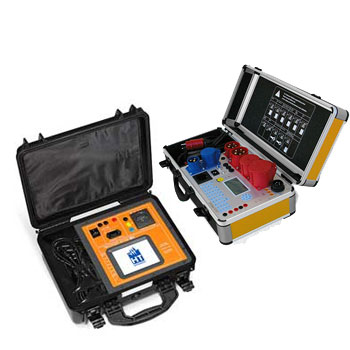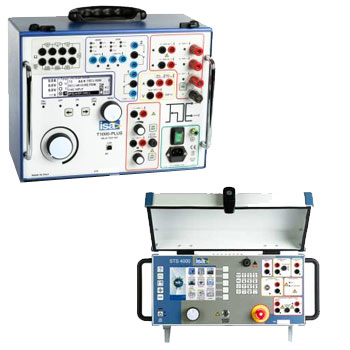
Precision Pressure Instruments – Reference Accuracy for Calibration & Quality
Precision pressure instruments deliver highly accurate, traceable results for laboratory, service, and production. Whether as a digital test gauge, reference transmitter, hand calibration pump, or pressure controller, they enable total error bands ≤ ±0.05…0.02% of span, documented calibrations, and reliable test procedures in line with ISO/DAkkS/GLP.
ICS Schneider Messtechnik supports you with range selection, uncertainty budgeting, media/connection choices (G/NPT, flange), temperature compensation, and the calibration & test concept including software and reports.
FAQ on Precision Pressure Instruments
Answers on accuracy, specifications, calibration, media, fittings, temperature effects, software, and practical tips.
How do precision instruments differ from standard pressure devices?
They feature lower total error bands, documented traceability, temperature compensation, finer resolution, and stable long-term drift—ideal for reference and verification tasks.
How is accuracy specified?
| Term | Description | Typical value |
|---|---|---|
| % of span | Percentage of full scale | ±0.05…0.02% |
| TC | Temperature-compensated range | e.g., 10…40 °C |
| Stability | Long-term drift per year | ≤ ±0.02…0.1% of span |
| Total | Total error band incl. influences | See datasheet |
Which sensor technologies are used?
| Technology | Strengths | Use |
|---|---|---|
| Piezoresistive | Excellent resolution, low ranges | Liquids/gases, precision |
| Thin-film | High robustness, wide ranges | Industry/service |
| Quartz/resonant | Top stability | Lab reference |
| Deadweight tester | Primary standard | Calibration labs |
Absolute, gauge, or differential—what is right?
Gauge (g) vs ambient for hydraulics/pneumatics, absolute (a) for vacuum/barometry, differential (Δp) for filters/flow and very low pressures.
How do I choose range and resolution?
Cover the working area and allow 1.3–2× headroom for tests. Aim for resolution at least 10× better than the DUT tolerance.
Which connection standards are available?
| Connection | Standard | Note |
|---|---|---|
| G 1/4 / G 1/2 | ISO 228 | Widely used |
| ¼″ NPT / ½″ NPT | ASME | US / oil & gas |
| Flange/hygienic | EN/ASME, Tri-Clamp | With diaphragm seal |
How does temperature affect measurement?
Outside the compensated range, errors increase. Choose devices with a defined TC spec and total error across your ambient window.
What role does the medium play?
For corrosive/conductive/viscous media select 316L stainless steel, possibly Hastelloy® and appropriate seals (FKM/EPDM/PTFE); use diaphragm seals for hygienic duties.
Do I need a hand pump or a pressure controller?
Hand pumps suit mobile checks up to a few hundred bar; pressure controllers provide automated, reproducible sequences with fine control and data logging.
How do I plan the uncertainty budget?
| Contributor | Example |
|---|---|
| Reference instrument | ±0.02% of span |
| Temperature | ±0.01% |
| Resolution/noise | ±0.005% |
| Fittings/leakage | ±0.005% |
Combine via root-sum-square (RSS) for a simplified combined uncertainty.
How often should I calibrate?
Recommended annually; for tight QA requirements semi-annually. After overload or repair, verify immediately.
What documentation is standard?
Calibration certificate (DAkkS/ISO), as-found/as-left, test points, environmental conditions, serial/ID—store securely (PDF/CSV/JSON).
Can I transfer data directly to my QA system?
Many devices offer USB/RS-232/RS-485 or Ethernet, some IO-Link/Modbus. Software/CSV exports simplify reporting and traceability.
How do I protect the reference device in the field?
Use a snubber against pressure spikes; for steam/hot media use a siphon/cooling element; for vibration consider glycerin damping or remote mounting.
What about leak testing?
Ramp slowly, allow stabilization time, ensure tight fittings/seals, minimize thermal drift; document the leak rate in your chosen unit (e.g., mbar/min).
Which IP ratings and display functions are available?
IP54–IP65/67 depending on housing; displays with min/max/peak, hold/tare, unit switching, and backlight ease daily work.
How do I fairly compare different manufacturers’ specs?
Compare only the total error band within the defined TC range, align units/references (of span vs. of reading), and consider long-term stability.
Do you support selection and calibration concepts?
Yes. We size range/resolution, define test points, supply certificates, accessories, and—on request—software/integration support.













































































































































































